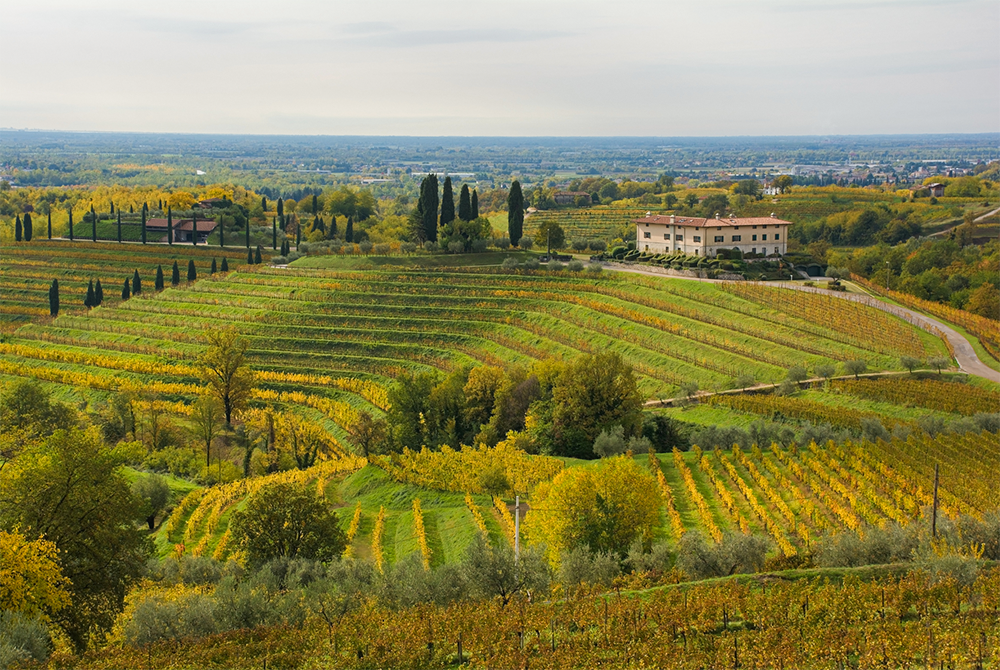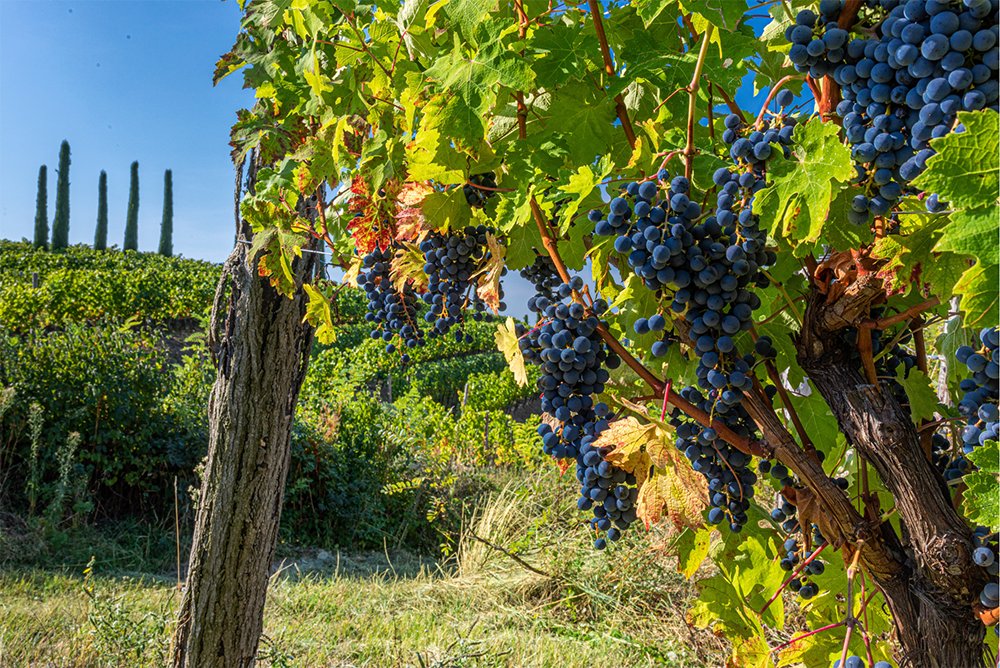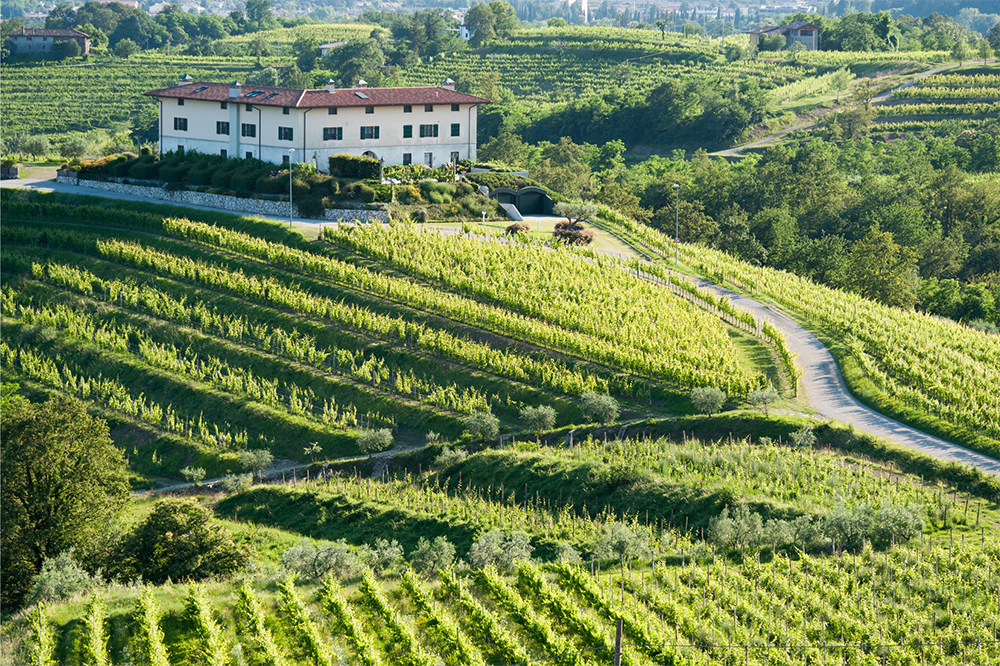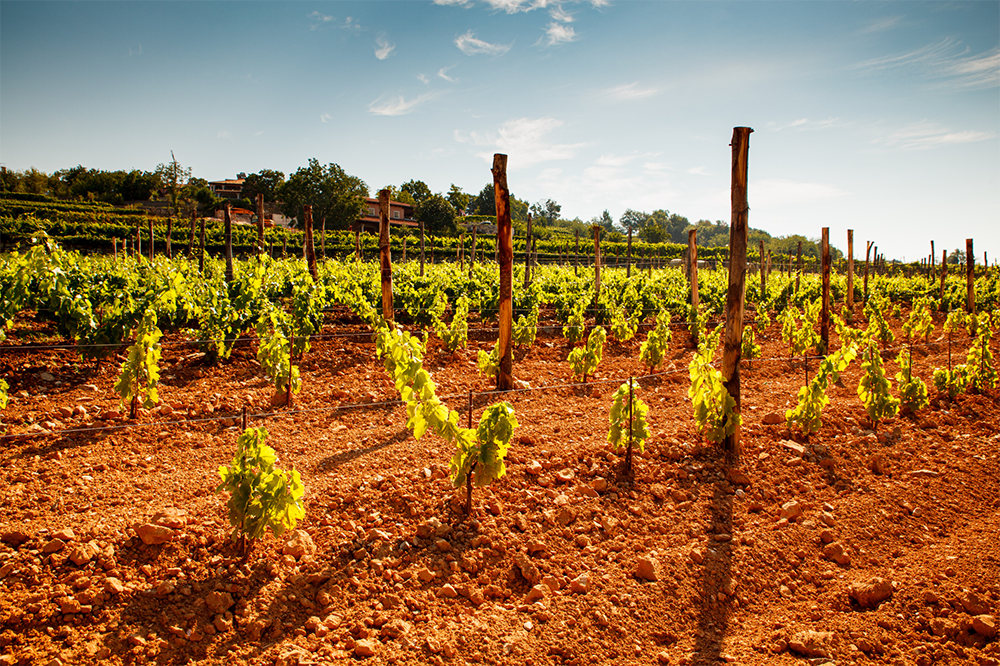In the previous article, I talked to you about Bordeaux wines. Today, I’ll talk to you about Friuli Venezia Giulia.
In Friuli, grape cultivation dates back to the 11th and 12th centuries. Historical documents attest to the existence of Robiola, also known as Ribolla, Picolit, and Refosco.
In the 19th century, Count Theodor de La Tour married the noble Elvine Ritter de Zahony, owner of the Villa Russiz estate. In 1868, the Count brought international grape varieties such as Pinot Grigio, Bianco and Nero, Sauvignon, and Merlot to Villa Russiz.
Index:
Climate and Territory
Friuli Venezia Giulia is nestled between Austria, Slovenia, the Adriatic Sea, and Veneto. The main areas are four:
- Mountainous Area: includes Carnia and the final part of the Carnic and Julian Alps. The climate is harsh and rainy, less suitable for vine cultivation
- Hilly Area: stretches along the border with Slovenia. This area is most suitable for viticulture. The soil is flysch, locally known as ponca. It consists of friable marly-sandstone rocks formed from debris rich in silt, clay, and sand left by the sea
- Plain: the climate is temperate and humid. This flat area is divided into:
- Upper Plain: corresponds to the Gravel of Friuli. Here, the soils derive from gravel and debris carried by glaciers
- Lower Plain: the sea moderates the climate. The soils are sandy-clayey and rich in minerals
- Isonzo Plain: the soils are gravelly and rich in iron
- Coastal Area: includes the territory towards Trieste and Istria. The karstic land is arid and challenging with limestone-rich soils on the slopes near the sea. Inland and flat areas have red, iron-rich soil and are more fertile. The climate is sub-Mediterranean. The hills protect the vineyards, sometimes whipped by the bora wind.

Grapes and Wines
White wines represent 67% of Friuli’s wine production.
The most commonly used training systems are Spalliera, Sylvoz, Guyot, and Cappuccina. Casarsa is widespread in the Gravel.
Key white grape varieties include:
- Pinot Grigio: the most cultivated grape variety, representing 38% of the total and over 50% among white and gray grape varieties
- Glera: dominant grape in the Prosecco denomination, originating from the municipality of Duino Aurisina
- Chardonnay: excellent grape for base wines for Metodo Classico sparkling wines
- Sauvignon: thrives in the hills of Collio and Colli Orientali del Friuli and in the Isonzo area
- Friulano: the foremost among native grape varieties, most beloved by Friulians
- Ribolla Gialla: anciently cultivated grape, with its preferred area being the hills of Udine and Gorizia
- Vitovska: late-ripening grape variety grown in the karstic region
- Verduzzo Friulano and Picolit: late-ripening grape varieties, with their preferred land being the eastern hills

Key red grape varieties include:
- Merlot: the most cultivated black grape variety (15%)
- Cabernet Franc: expresses itself well in stony soils along the rivers
- Cabernet Sauvignon: cultivated throughout Friuli and suitable for aging in wood
- Refosco dal Peduncolo Rosso: most widespread grape variety throughout Friuli
- Schioppettino: also known as Ribolla Nera, derived from its crispy skin that pops in the mouth. Its preferred land is in the Prepotto cru
- Pignolo: preferred land is in the hills of Rosazzo, Buttrio, and Rocca Bernarda
Wine Regions
The wine regions are:
- Coastal area in the province of Udine
- Grave area
- Hills in the provinces of Udine and Gorizia
- Isonzo
- Carso
Coastal Area in the Province of Udine
This area begins in the flat area of Lison-Pramaggiore, located in the province of Pordenone. The soils here are rich in calcium, and the winds from the nearby Adriatic Sea make this area ideal for producing elegant and fragrant wines.
Along the coast of the Adriatic Sea, you’ll find the Friuli Latisana designation. This area extends south of the province of Udine. Here, international and local grape varieties produce high-quality white wines.
In the small lagoon area, you’ll find the Friuli-Annia designation. This area experiences significant temperature fluctuations, and the soils give a unique structure and aroma to Traminer aromatico, Friulano, and Pinot Grigio.
This area concludes with the Friuli-Aquileia designation, which extends from the Grado lagoon to the fortress of Palmanova. The soils here are sandy-clayey.
Grave Area
This area is the largest in Friuli, covering approximately 7,500 hectares. It encompasses the provinces of Pordenone and Udine.
The mountains shield the Grave from cold northern winds, while the Adriatic Sea mitigates its effects.
Pinot Grigio represents over 30% of the production.
Hills in the Provinces of Udine and Gorizia
In the extraordinary hills of the province of Udine, you’ll find the Friuli Colli Orientali designation.
Friuli Colli Orientali includes 5 subzones:
- Cialla: protected by chestnut and oak forests, with a long and narrow valley. This area, influenced by the bora wind, experiences beneficial temperature fluctuations
- Schioppettino di Prepotto: a black grape island in a sea of white grape vines. Schioppettino has been produced for centuries in the small area of Prepotto and Albana, in the Judrio Valley
- Ribolla Gialla di Rosazzo: along with Pignolo di Rosazzo, it identifies the wines produced in three municipalities at the foot of the Rosazzo Abbey, founded by the Augustinians in 1068
- Pignolo di Rosazzo
- Refosco di Faedis: only affects 47 hectares of the five northeasternmost municipalities of the designation, where Refosco or Refoscone or Refosco Nostrano expresses itself best

Among these extraordinary hills, you’ll also find the DOCG Colli Orientali del Friuli Picolit. This outstanding wine exudes scents of flowers, acacia honey, and syrupy fruit, and can age for many years. It pairs perfectly with foie gras torchon and brioche crostini, or the traditional gubana.
In the hills of the province of Gorizia, near the Slovenian border between the Isonzo and Judrio rivers, the DOC Collio is born. Excellent white wines are produced on these hills, representing 86% of the production.
Pinot Grigio, Sauvignon, Pinot Bianco, Ribolla Gialla, and Friulano are the true dominators.
Additionally, in Dolegna and Ruttars, the pedoclimatic interweaving yields some of the world’s best Sauvignon.
Isonzo
The Friuli Isonzo designation extends between the Isonzo Valley and the high plain of the province of Gorizia.
The combination of mountain protection, proximity to the sea, and the gusts of bora wind creates favorable temperature fluctuations to obtain aromatic, structured, mineral wines suitable for aging.
In the area between Gorizia and Cormòns, it’s called Rive Alte. In this area, the vineyards of white grape varieties are concentrated.
Between Gradisca, Romans, and Mariano, to the left of the Isonzo, you’ll find Rive di Giare. This is the warmest area, subjected to constant ventilation. Here, Refosco dal Peduncolo Rosso and Merlot yield the best results.
Carso
The Carso plateau is near the border with Slovenia. Here, the soil is red due to its richness in iron, rocky, and arid as it struggles to retain water, and gusts of bora wind blow from the northeast.

In the province of Trieste and a small part of Gorizia, you’ll find the Carso designation. Viticulture is challenging here, where trenches are dug and filled with red dolina soil before planting the vines.
Last word
Now, when you hear about Friuli Venezia Giulia wines, you won’t be left out of the conversation.
How familiar are you with wine terms? Are you an expert or a beginner? Consult a small wine glossary.
Amo la buona cucina e le tradizioni enogastronomiche italiane, per me vino e dessert non sono solo un contorno ma la parte più interessante del buon vivere.













